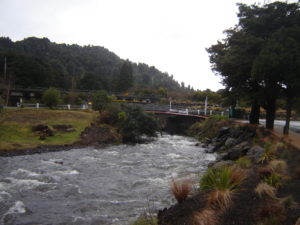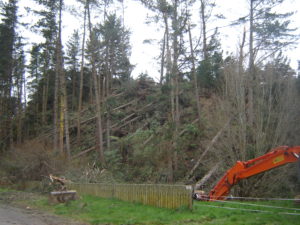Nearly nine years ago, when I was invited to accept a three-week visiting fellowship in New Zealand with the Centre for Advanced Engineering in New Zealand (CAENZ) at the University of Canterbury, people began to ask me why the New Zealanders were so interested in me or the work of our Hazards Planning Center at the American Planning Association. My response was to ask another question: “Have you seen Lord of the Rings?”
The overwhelming majority of inquirers would say yes, and I would follow up by asking whether they were aware that the entire trilogy was filmed in New Zealand. Most were, though not all. “Look at the landscape in those films,” I would say, adding that “it ought to come to you” after doing so. Later, I wrote an article for Planning, APA’s monthly magazine, about the experience, titling it “A Landscape of Hazards.” New Zealand almost literally has it all: earthquake faults, active volcanoes, coastal storms, landslides, flash floods, and even occasional wildfires. One day, back in the states, I even learned that a small tornado had struck in Auckland. There were very good reasons CAENZ spent enough money to bring me there to consult on national hazards policy and land use.
One serious consequence of the visit, which included my doing seven lectures and seminars around the country during that time, was that I established a number of valuable and lasting professional relationships, some of which are occasionally rekindled by meeting Kiwi researchers at conferences in the U.S. since then. One was a young researcher, Wendy Saunders, at GNS Science, who recently sent me a copy of a new report she co-authored for this crown research center, released in November. “The Role of Science in Land Use Planning: Exploring the Challenges and Opportunities to Improve Practice” made me realize that a common problem in U.S. planning, the introduction of scientific information related to natural hazards, is not much different halfway around the world, even under a rather different planning framework than ours.
Indeed, one other benefit of the trip was that, not only did they learn from me about the complexities and idiosyncrasies of land-use planning in the United States, but I learned a great deal about their system as well, and it broadened my perspective on how planning is practiced around the world. Things are somewhat simpler in this small nation of 4.2 million people on two islands that together are somewhat smaller than California. That led to an interesting comment from one gentleman to another in the front row of a modest crowd at the Christchurch regional council following one of my presentations. “We’re about the size of a small state over there,” he mused. Yes, I thought, we are two sovereign nations, but vastly different in size, with systems calibrated to very different needs as a result.
In the New Zealand context, the result is a system, based on 1989 reforms, in which there is no “state” layer of government between the national government in Wellington and local government at the municipal level. Under the nation’s Resource Management Act, however, a series of regional councils does provide oversight of environmental policy and reviews local decisions for compliance. Those regions are basically based on watershed boundaries, which may seem like nirvana to some bioregionalists in the U.S., but they entail their own political challenges. No system is perfect.
The challenge the GNS Science report addresses, in fact, is that of properly introducing natural hazards science into land-use policy at the local level, which is not an easy task even in New Zealand, where such hazards seem abundant and omnipresent. The report includes a case study of GNS’s own experience in intervening in a plan change in Hutt City, near Wellington on the North Island, where a major earthquake fault straddles and affects much urban development. The problem of how to introduce issues like climate and hazard mitigation into the planning process is one we have pondered repeatedly at the Hazards Planning Center at APA, precisely because that is our mission. As the GNS report notes, while local planners may complain that science is often presented In ways that lack translation into a local context, with no straightforward means of resolving conflicts between experts, scientists nonetheless “are often frustrated by the lack of uptake of their science in land use planning decisions.” Maybe Kiwis and Yankees, at least in this respect, have far more in common than we realize.
Inevitably, because there are no simple solutions that fit all cases, the report concludes that incorporating natural hazards science in land-use decision making is a “complex process influenced by numerous social levers and networks.” In the Hutt City case, economic development was paramount, but natural hazards took their place on the stage in part as a result of GNS Science’s intervention, a lesson to scientific researchers that it is important for them to find their voice even if local elected officials and policy makers may not absorb all the subtleties of scientific conclusions. It is not always a matter of scientists being poor communicators. Sometimes public officials must be better listeners. Scientists must be willing to learn more about the planning process, but planners must learn more about the nuances of scientific assessments. Public safety with regard to natural hazards risks is not a matter of stopping all development, but of using scientific knowledge wisely to make development better. We must all become better at reaching across disciplinary boundaries to reduce misunderstanding and misinformation and to receive information vital to making better decisions. The importance of this became very clear to me less than three years after my visit, when Christchurch, the home of CAENZ, was shaken by significant earthquakes from which the city is still recovering.
Jim Schwab

